Jonathan Lwowski
Aerial Infrared Health Monitoring of Solar Photovoltaic Farms at Scale
Mar 03, 2025Abstract:Solar photovoltaic (PV) farms represent a major source of global renewable energy generation, yet their true operational efficiency often remains unknown at scale. In this paper, we present a comprehensive, data-driven framework for large-scale airborne infrared inspection of North American solar installations. Leveraging high-resolution thermal imagery, we construct and curate a geographically diverse dataset encompassing thousands of PV sites, enabling machine learning-based detection and localization of defects that are not detectable in the visible spectrum. Our pipeline integrates advanced image processing, georeferencing, and airborne thermal infrared anomaly detection to provide rigorous estimates of performance losses. We highlight practical considerations in aerial data collection, annotation methodologies, and model deployment across a wide range of environmental and operational conditions. Our work delivers new insights into the reliability of large-scale solar assets and serves as a foundation for ongoing research on performance trends, predictive maintenance, and scalable analytics in the renewable energy sector.
Solar Panel Mapping via Oriented Object Detection
Feb 05, 2025Abstract:Maintaining the integrity of solar power plants is a vital component in dealing with the current climate crisis. This process begins with analysts creating a detailed map of a plant with the coordinates of every solar panel, making it possible to quickly locate and mitigate potential faulty solar panels. However, this task is extremely tedious and is not scalable for the ever increasing capacity of solar power across the globe. Therefore, we propose an end-to-end deep learning framework for detecting individual solar panels using a rotated object detection architecture. We evaluate our approach on a diverse dataset of solar power plants collected from across the United States and report a mAP score of 83.3%.
Barely-Visible Surface Crack Detection for Wind Turbine Sustainability
Jul 09, 2024



Abstract:The production of wind energy is a crucial part of sustainable development and reducing the reliance on fossil fuels. Maintaining the integrity of wind turbines to produce this energy is a costly and time-consuming task requiring repeated inspection and maintenance. While autonomous drones have proven to make this process more efficient, the algorithms for detecting anomalies to prevent catastrophic damage to turbine blades have fallen behind due to some dangerous defects, such as hairline cracks, being barely-visible. Existing datasets and literature are lacking and tend towards detecting obvious and visible defects in addition to not being geographically diverse. In this paper we introduce a novel and diverse dataset of barely-visible hairline cracks collected from numerous wind turbine inspections. To prove the efficacy of our dataset, we detail our end-to-end deployed turbine crack detection pipeline from the image acquisition stage to the use of predictions in providing automated maintenance recommendations to extend the life and efficiency of wind turbines.
ZRG: A High Resolution 3D Residential Rooftop Geometry Dataset for Machine Learning
Apr 26, 2023Abstract:In this paper we present the Zeitview Rooftop Geometry (ZRG) dataset. ZRG contains thousands of samples of high resolution orthomosaics of aerial imagery of residential rooftops with corresponding digital surface models (DSM), 3D rooftop wireframes, and multiview imagery generated point clouds for the purpose of residential rooftop geometry and scene understanding. We perform thorough benchmarks to illustrate the numerous applications unlocked by this dataset and provide baselines for the tasks of roof outline extraction, monocular height estimation, and planar roof structure extraction.
Destruction of Image Steganography using Generative Adversarial Networks
Dec 20, 2019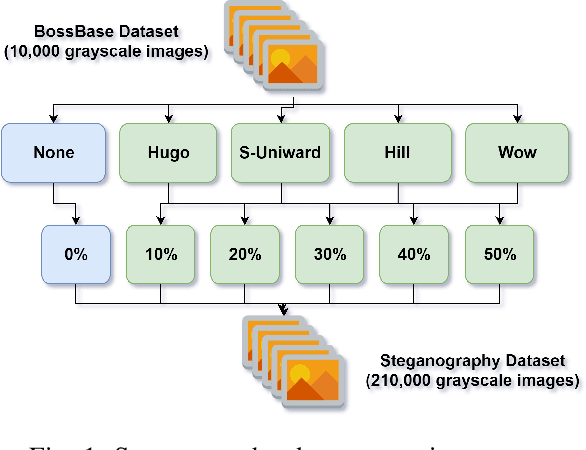
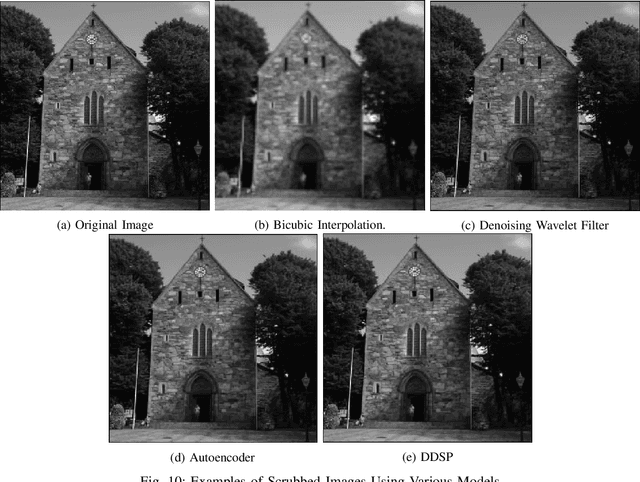
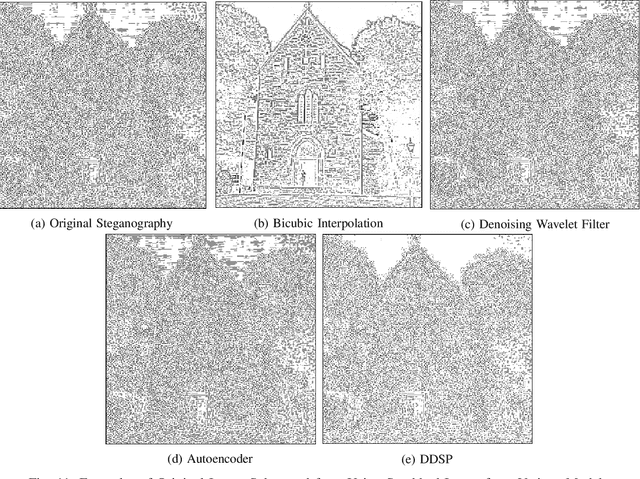
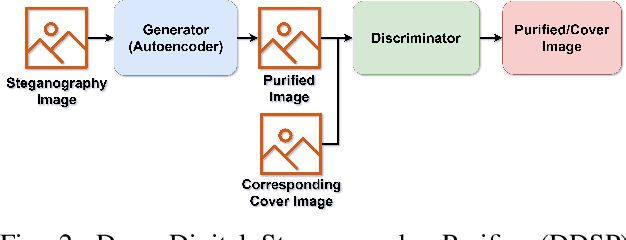
Abstract:Digital image steganalysis, or the detection of image steganography, has been studied in depth for years and is driven by Advanced Persistent Threat (APT) groups', such as APT37 Reaper, utilization of steganographic techniques to transmit additional malware to perform further post-exploitation activity on a compromised host. However, many steganalysis algorithms are constrained to work with only a subset of all possible images in the wild or are known to produce a high false positive rate. This results in blocking any suspected image being an unreasonable policy. A more feasible policy is to filter suspicious images prior to reception by the host machine. However, how does one optimally filter specifically to obfuscate or remove image steganography while avoiding degradation of visual image quality in the case that detection of the image was a false positive? We propose the Deep Digital Steganography Purifier (DDSP), a Generative Adversarial Network (GAN) which is optimized to destroy steganographic content without compromising the perceptual quality of the original image. As verified by experimental results, our model is capable of providing a high rate of destruction of steganographic image content while maintaining a high visual quality in comparison to other state-of-the-art filtering methods. Additionally, we test the transfer learning capability of generalizing to to obfuscate real malware payloads embedded into different image file formats and types using an unseen steganographic algorithm and prove that our model can in fact be deployed to provide adequate results.
DomainGAN: Generating Adversarial Examples to Attack Domain Generation Algorithm Classifiers
Nov 18, 2019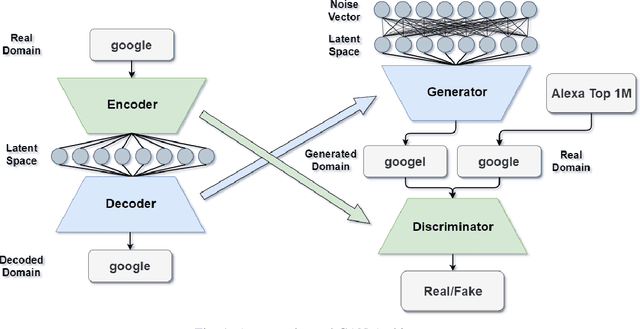

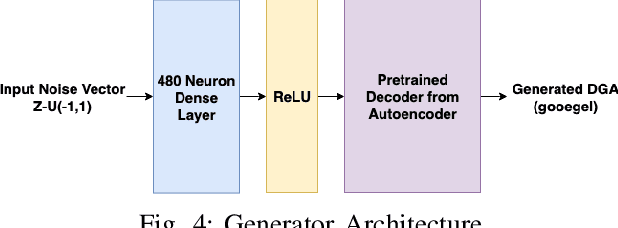

Abstract:Domain Generation Algorithms (DGAs) are frequently used to generate numerous domains for use by botnets. These domains are often utilized as rendezvous points for servers that malware has command and control over. There are many algorithms that are used to generate domains, however many of these algorithms are simplistic and easily detected by traditional machine learning techniques. In this paper, three variants of Generative Adversarial Networks (GANs) are optimized to generate domains which have similar characteristics of benign domains, resulting in domains which greatly evade several state-of-the-art deep learning based DGA classifiers. We additionally provide a detailed analysis into offensive usability for each variant with respect to repeated and existing domain collisions. Finally, we fine-tune the state-of-the-art DGA classifiers by adding GAN generated samples to their original training datasets and analyze the changes in performance. Our results conclude that GAN based DGAs are superior in evading DGA classifiers in comparison to traditional DGAs, and of the variants, the Wasserstein GAN with Gradient Penalty (WGANGP) is the highest performing DGA for uses both offensively and defensively.
 Add to Chrome
Add to Chrome Add to Firefox
Add to Firefox Add to Edge
Add to Edge